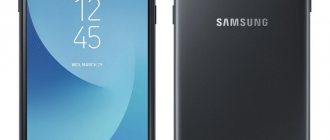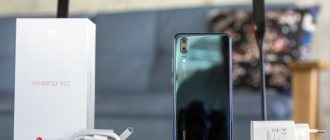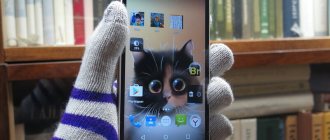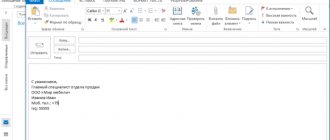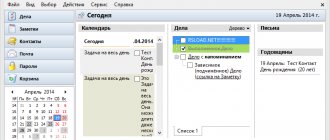What is the Avrora operating system
Avrora is a Russian OS developed by Open Mobile Platform LLC, part of the Rostelecom group. It is included in the unified register of Russian software and has a certificate of conformity of the FSB of Russia AK1/KS1. The operating system is built on Linux and is open source. At the same time, it has a high level of security and protection against hacking.
Initially, the OS was called Sailfish; its development began in 2012 by people from Nokia. Six years later, Rostelecom acquired 75% of the shares, thanks to which the operating system became Russian. Then it gets a domestic name, because they plan to install it on smartphones for civil servants and officials. Aurora will become an alternative to Android and iOS, since it is an independent Russian product, the performance of which does not depend on sanctions.
The Russian Aurora OS will gain incredible flexibility; on its basis it is planned to create industry-specific solutions that meet business needs. It will be able to work as a mobile payment terminal or workplace, and it will also provide users with standard functionality - it already has an email client, a built-in browser, an application for managing contacts and calls, and a messaging application. The operating system also allows you to work with documents, multimedia files and a calendar. Another important function will be support for working in an electronic document management system using digital signatures.
Most of the features and applications are currently in the testing phase.
The Ministry of Telecom and Mass Communications will spend billions on the Russian mobile OS
The Ministry of Telecom and Mass Communications proposed to allocate 8.2 billion rubles for the development and implementation of the Russian mobile OS Aurora, TASS reports. The document was published on the portal “Future of Russia. National projects". It is proposed to include such a budget for the next four years in the national program “Digital Economy”, in particular, in the federal project “Digital Public Administration”. It is assumed that Aurora OS will first be installed in government agencies.
Perhaps in the future, Aurora OS will be included in the list of software for mandatory installation on Russian smartphones, tablets, etc. Aurora OS was previously known as Sailfish OS. It is an operating system based on open source projects and including closed source components.
Sailfish OS has been developed since 2012 by the Finnish company Jolla. In 2018, Rostelecom bought a 75% stake in the developer Sailfish. From that moment on, Sailfish became a Russian operating system. In February 2020, it was renamed OS Aurora.
According to one of the developers, this business in Russia was launched by businessman Pavel Eiges, “widely known in narrow circles.” The idea was to receive a government order for the supply of devices to government agencies and law enforcement agencies. However, in the end, the businessman sold the project to Rostelecom Corporation, so now it will be implementing the plan.
The mobile OS was included in the unified register of Russian software on September 5, 2020 (under No. 1543), and has a certificate of conformity of the FSB of Russia AK1/KS1. Such certificates are not available for Android and iOS.
It has already been decided that Aurora will be installed on tablets manufactured at Russian and Baiterg factories and intended for census takers during the All-Russian Population Census. In total, 360 thousand devices will be produced for the census.
Russian tablet "Aquarius"
Among the proposals of the Ministry of Telecom and Mass Communications is “providing measures to support the development of the domestic mobile operating system Aurora, including in government bodies and local governments when they provide services and perform functions.”
It is proposed to start funding in 2021 (450 million rubles), next year it is planned to allocate about 1 billion rubles, in 2023 and 2024 - 3.3 billion each. Thus, in total it is proposed to allocate 8.2 billion to finance Aurora billion rubles
For the first time, the national program documents specify the amount of financial support for the national mobile OS. Rostelecom declined to comment.
See also:
- “Experimental regime in IT and government services for organizing remote work: Putin gave instructions to the government”
- “The Ministry of Telecom and Mass Communications will track the geolocation of the phone of those infected with COVID-19 and those with whom they came into contact”
- “An experiment begins on the transition of government agencies to Russian cryptography”
Latest news about Russian OS
Despite the fact that Aurora is at the testing stage, the developers have already prepared a user manual for it with more than two hundred pages. In it you can get acquainted with the already implemented functionality and evaluate the usability of the interface, look at the application grid, study the operating system settings and read instructions on how to use certain functions.
Let's see what's going on around the operating system:
- Huawei is negotiating the possible installation of Aurora on its devices. It is difficult to predict whether this will actually come to pass. The news is dated July 10, 2020;
- Aurora was included in the Russian software registry, where it became the first operating system;
- In July 2020, it was proposed to equip 1.4 million officials with Aurora-based devices - thereby planning to ensure additional security of government data;
- At the Innoprom-2019 exhibition, a protected Russian tablet Aquarius CMP NS208b running on Aurora was presented - it was created to work in harsh conditions and is protected according to the IP67 standard;
- In July 2020, an application for working with electronic signatures was released;
- In the future, they plan to create a mobile application “My Passport” for electronic Russian passports with support for cloud digital signatures;
- In 2021, up to 8 million state employees will use the system; it is planned to spend 160 billion rubles on this.
Experts believe that the Russian operating system for smartphones Aurora has great potential and in the future it will be able to take its rightful place next to other operating systems.
The Russian operating system Sailfish OS for smartphones turned out to be a big failure
Miscellaneous 04/15/2018 | 4
At the beginning of March 2020, the state bought the Russian operating system Sailfish OS for an astronomical amount of money - for $50 million dollars or somewhere around 3 billion rubles. This OS is intended for installation on smartphones and tablets, and its development took several years, although this product was essentially created by the Finnish company Jolla. Despite the huge investments of funds, the Russian operating system turned out to be of no use to anyone, because the Inoi company became the only manufacturer of phones based on it, but it released only one model and decided to abandon this idea.
The Kommersant publication writes that the domestic Sailfish OS operating system for smartphones is not in as great demand as the analysts who developed this product predicted. Although a colossal amount of money was spent on its creation, the Russians found this software uninteresting. Last year, the Inoi R7 touchscreen phone hit store shelves, becoming the first and only smartphone based on the new OS.
However, in more than six months since the start of sales, it has sold in ridiculous numbers, but the exact figure is kept secret. The largest number of smartphones on the Russian Sailfish OS were purchased by Russian Post - as many as 15,000 copies. Alas, such sales do not cover even 5% of the costs of its development. Due to the low demand for the Inoi R7 smartphone, which caused the Russian company, its management decided to reconsider its strategy.
Now Inoi will produce phones based on the Android operating system created by the American company Google. The publication AKKet.com has already written that in the summer of this year, this manufacturer will not immediately launch several models from the price category from 2,900 to 7,900 rubles, and regular push-button phones with a price tag from 490 to 1,890 rubles will also be available for purchase. There will be no trace of Sailfish OS in any of them.
All this suggests a very simple conclusion - the Russian $50 million (3 billion rubles) Sailfish OS operating system has completely failed. The only place where it can find its application is the corporate segment, but even there the chances of its success are extremely low. What fate awaits the domestic OS in the future is unknown.
Attention! Until July 26, everyone can receive a Xiaomi Mi Band 5 sports bracelet for free, spending only 2 minutes on it.
Join us on Google News , Twitter, Facebook, VKontakte, YouTube and RSS to stay up to date with the latest news from the world of future technologies.
AKKet.com Telegram channel
Receive notifications about new materials directly in the messenger - on iOS, Windows, Android and Linux.
InoiSailfish OSRussiaSmartphones
What is the difference from Android and IOS
The main differences between Aurora and the usual iOS and Android:
- Complete independence from sanctions and unfriendly actions of the West - theoretically, the United States can deprive Android and iOS devices of functionality as part of the next package of sanctions;
- High level of data security – OS testing indicates a serious level of protection;
- Reduced power consumption is great news, but as you install new applications, power consumption may increase;
- Possibility of permanent removal of unnecessary software.
There is also a convenient system for managing running applications - their contents are displayed on the screen in the form of tiles, which provides control over them and quick switching.
What is Aurora OS
The fact is that in fact, “Aurora,” which is increasingly being talked about by government agencies, is nothing more than Sailfish OS, widely known in narrow circles. It was designed by people from Nokia, who founded the Jolla company and for the time being were developing a smartphone of the same name with a proprietary OS on board. Despite the promise of the Finns' new platform, the lack of funding led to the fading of the enthusiasm of the company's core.
Smartphones released on Sailfish
Several devices have been released on the Sailfish operating system:
- Intex Aqua Fish smartphones were presented at the MWC 2016 exhibition. It was equipped with a Qualcomm processor with a frequency of 1.3 GHz, a 5-inch screen with a resolution of 1280x720 pixels, as well as 2 GB of RAM and 16 GB of user memory. The smartphone is sold in India;
- Ermak WMD from the Russian corporation Mobile Inform Group. It is based on a Qualcomm Snapdragon S4 Plus processor with a frequency of 1.5 GHz. Also on board there are 1 GB of RAM and 8 GB of user memory. A 4 GB memory card is included in the package. The advantage of the smartphone is NFC support. In appearance, the device resembles the HTC Desire smartphone;
- INOI R7 is another phone from Sailfish. On board there is a 5-inch display, 2 GB of RAM and 16 GB of ROM, and an 8-inch camera. Processor – Qualcomm Snapdragon 212 with a frequency of 1.2 GHz (judging by the manufacturer’s official website, the device managed to receive positive reviews);
- Jala Accione is a smartphone with a Qualcomm Snapdragon processor with 4 or 8 cores, 2/16 or 3/32 GB of RAM/ROM. Produced in Bolivia, users can choose from two operating systems – Sailfish or Android 7.1.2 Nougat.
Most models are not on sale. It is not yet possible to buy a smartphone with Aurora OS.
Applications for Aurora
There are currently no applications for the system in online stores. All system software is in closed development and cannot be found in the public domain. Most of Aurora's native programs are currently being tested.
The developers claim that all Android applications will be compatible with the new OS. That is, you can install any program from Google Play on Aurora. It is now known that the system works well with the popular instant messenger WhatsApp.
Smartphones released on Sailfish
Now there are several devices that work on Aurora:
- Intex Aqua Fish - a smartphone with average performance on a modern processor, sold in India;
- Ermak OMP runs on Qualcomm Snapdragon S4 Plus, supports NFC;
- INOI R7 - runs on a 1.2 GHz processor, has 2 GB of RAM and a 5-inch screen;
- Jala Accione is manufactured in Bolivia and comes in two variants with Android or Avrora for the user's choice - available in 4 or 8 cores.
At the moment, you cannot buy a smartphone with Aurora OS. The release of such devices is planned in limited quantities - exclusively for officials.
